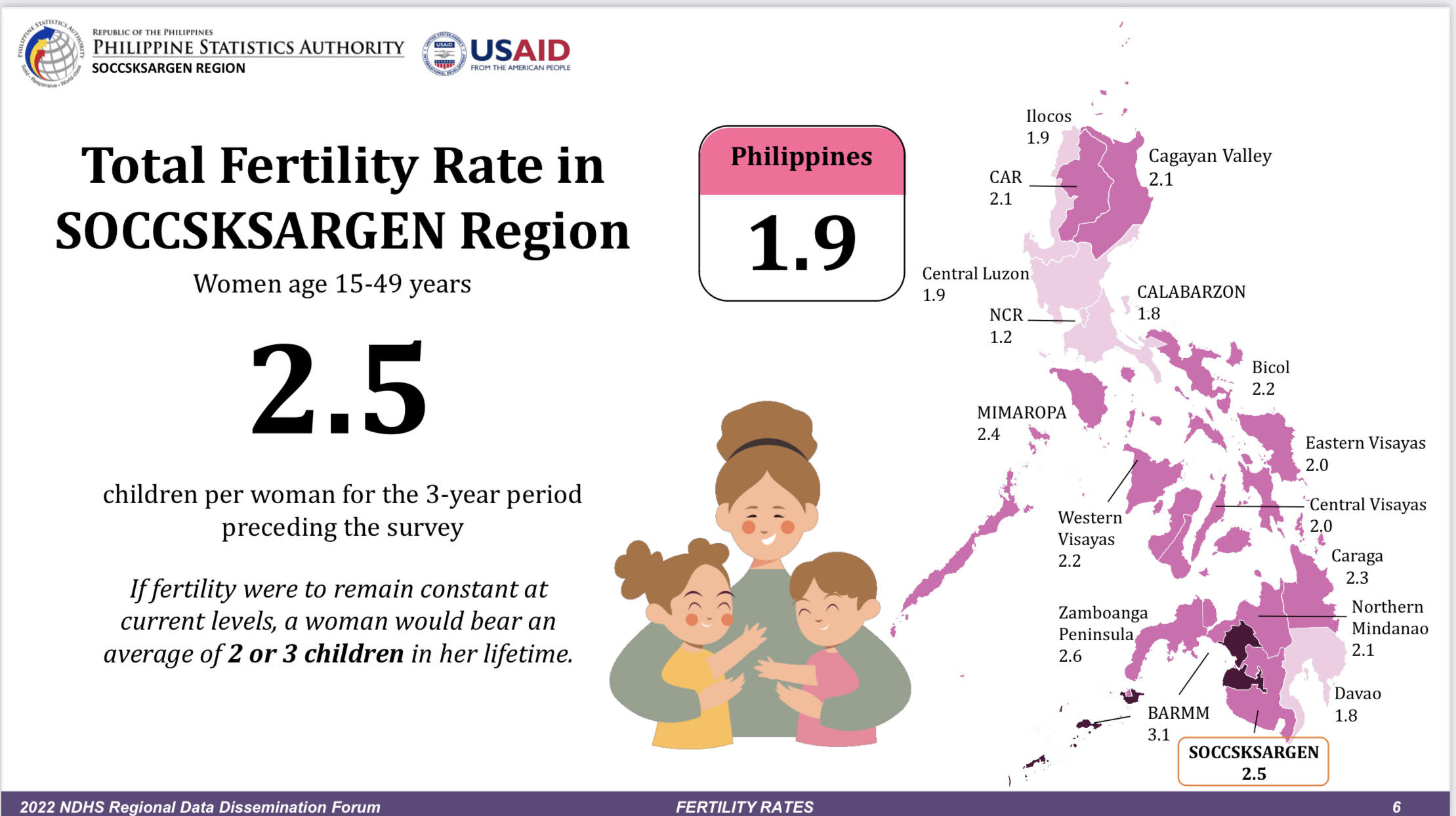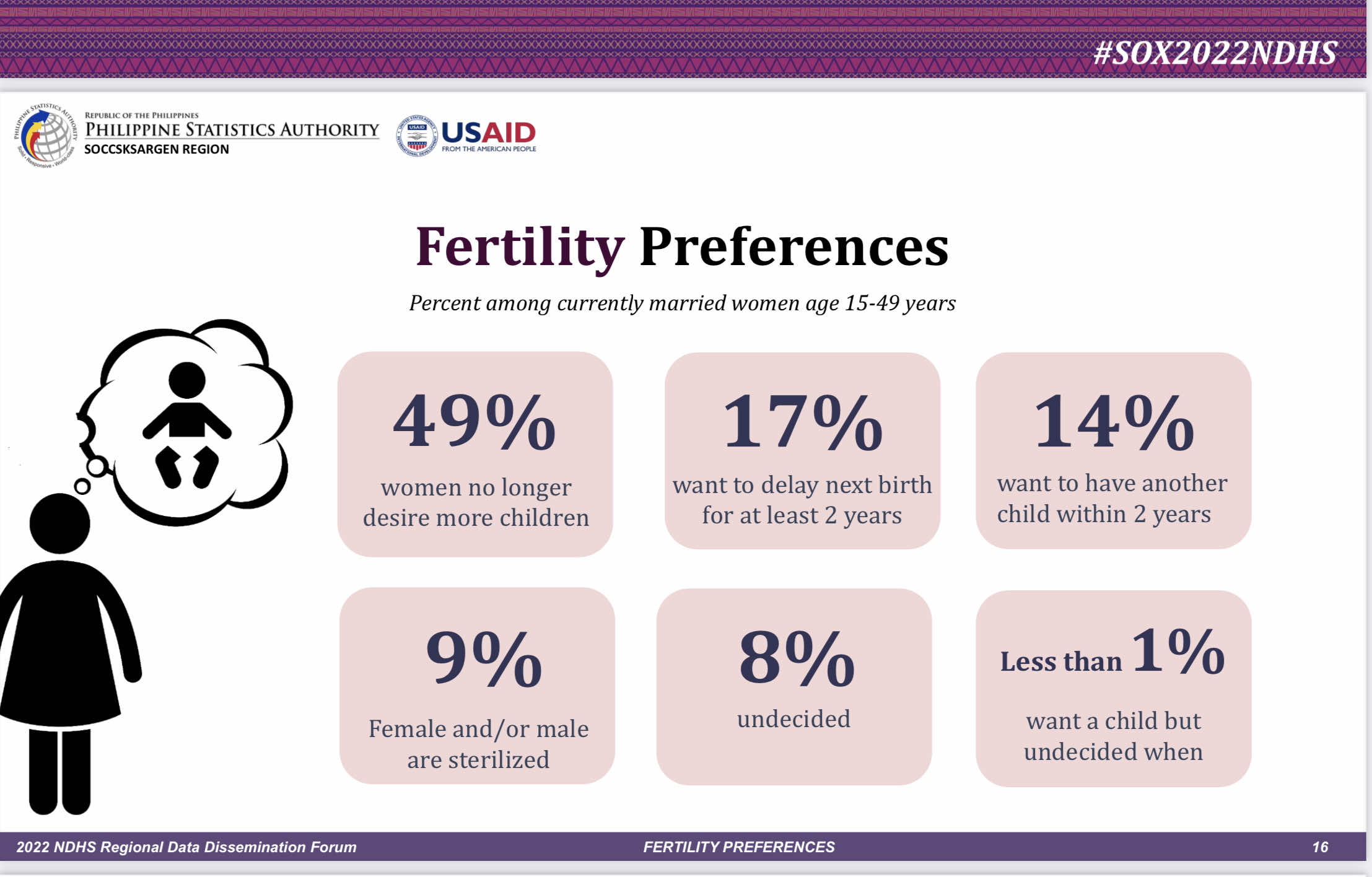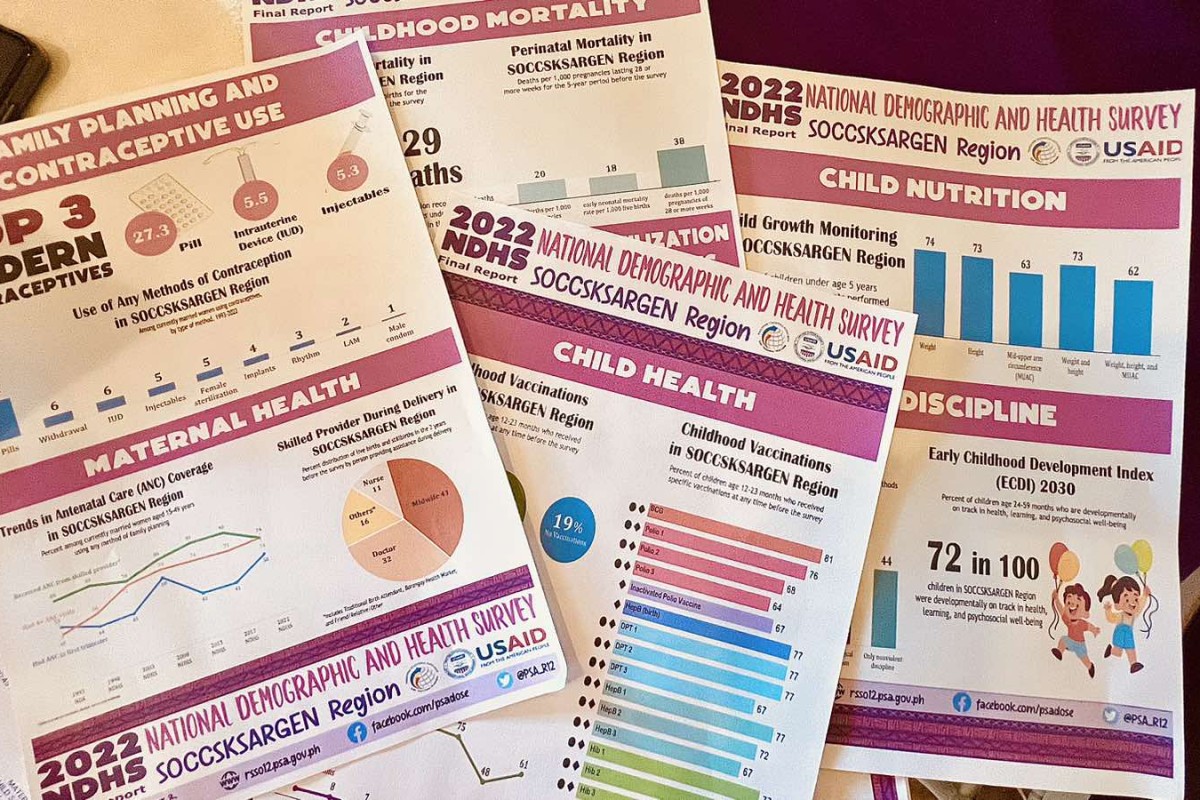
KORONADAL CITY, South Cotabato (PIA) -- Nearly 1 in 2 married women in SOCCSKSARGEN Region opt not to have additional children based on the 2022 National Demographic and Health Survey (NDHS) conducted by the Philippine Statistics Authority (PSA).
Ma. Eileen Berdeprado, chief statistical specialist of Philippine Statistics Authority (PSA) XII, who reported on fertility and family planning results of the 2022 NDHS in a regional data dissemination forum in Koronadal City on July 26, revealed that 49% of married women age 15 to 49 in SOCCSKSARGEN "no longer desire more children."
Only 17% of women here want to have more children but would like to delay getting pregnant for at least two years, while 14% want to have children within those two years.
Berdeprado also reported that the total fertility rate (TFR)—the average number of children that would be born to a female over her lifetime—in the region is improving, currently at 2.5, which she explained "means that if fertility were to remain constant at current levels, a woman in SOCCSKSARGEN Region bears an average of two to three children in her child-bearing years."
"Although the TFR in the region is higher than the national TFR of 1.9, it is much improved as compared to the region’s TFR in 2003, which was at 4.2, or 4 to 5 children per mother," she said.
Intervals between consecutive births have also lengthened from about two and a half years in 2017 to three years and nine months in 2022.
Berdeprado reported further that the rate of planned births among 15- to 49-year-old women in SOCCSKSARGEN has increased from merely 54% in 1993 to 71% in 2022. In the same period, mistimed and unplanned births also decreased from 29% to 16% and 17% to 13%, respectively.
The 2022 NDHS survey also found that 55% of women in the region who were married at the time of the study preferred any method of contraception, 46% favored modern methods, and the remaining 9% leaned toward traditional means of birth control.
Popular contraceptive methods include pills, withdrawal, intrauterine devices, female sterilization, and injectables.
Responding to the presentation, Regional Director Desiree Concepcion Garganian of the Commission on Population and Development (CPD) XII said the data on fertility, pregnancy, and family planning provide reasons for celebration.
“First, our total fertility rate in the region, now at 2.5, reflects a programmatic success not only for the Department of Health but also for other multi-stakeholders,” Director Garganian said.
Data showing a longer interval between births is aligned with the health sector’s core message of "taking more time considering next pregnancies and valuing the time of pregnancies because it protects the mother’s health and the infant’s development and ensures primary resources for the arrival of another family member," she said.

Garganian, however, pointed out that there is a need to look into who among the 15- to 49-year-old women desires fewer children.
“Are these only from the higher educational levels and income levels? If yes, there will be a need to intensify demand generation and made more targeted to achieve our program goals,” she said.
Data on the growing use of contraceptives, Garganian emphasized, has implications particularly for local government units.
“The advent of the Mandanas-Garcia ruling pushing for devolution has left the responsibility of procurement for condoms and pills in the hands of the LGUs. The need for LGUs to maintain the availability of these commodities in their respective RHUs will be high,” she said. “Provision of services and commodities for family planning must remain uninterrupted to ensure that end users won’t end up with unwanted pregnancies.”
The 2022 NDHS was implemented by the Philippine Statistics Authority with funding from the Philippine Government and the United States Agency for International Development (USAID).
Data collection took place in May and June 2022, covering over 30,000 households and nearly 28,000 women ages 15 to 49.
In the SOCCSKSARGEN Region, a sample of 1,630 women were interviewed for the survey.
SOCCSKSARGEN, or Region 12, straddles the provinces of South Cotabato, Cotabato Province, Sultan Kudarat, and Sarangani, as well as the cities of General Santos, Koronadal, Tacurong, and Kidapawan.
Information gathered includes fertility, fertility preferences, family planning practices, childhood mortality, maternal and child health, nutrition, knowledge and attitudes toward HIV/AIDS, violence against women, child discipline, early childhood development, and other health issues. (DED -- PIA SOCCSKSARGEN)




